The Research Process
This is an illustrated record of the research process that I went through on my journey through my discovery of Joan Wisdom buried within the Adamson Collection archives held at the Wellcome Trust in London. Having been shown an example from each of the five Art and Health Collections that the Wellcome Trust holds, some of which are uncatalogued at the time of writing.
This was a Journey that I knew would initially take 10 weeks and would culminate three months later in the production of an artistic response to the collection that we chose to look at in detail.
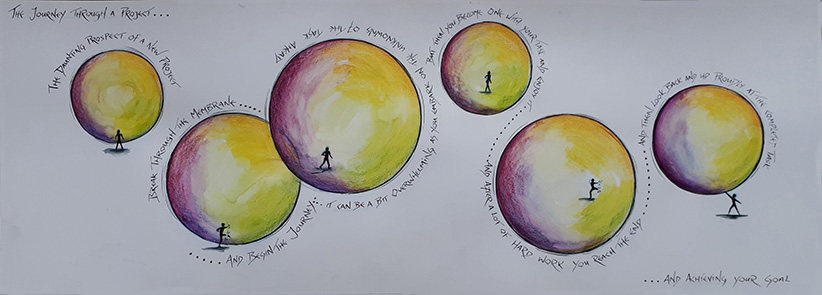
The Beginning of the Journey
Any project is like a bubble, an entity within it's self that one has to treat with respect, get to understand what the project is, climb in and enter cautiously, take a stock of what the project entails and plan your journey through it. When reaching the end, tie up all the loose ends, make sure nothing niggles you about it, package and present your project and own it as your hard work!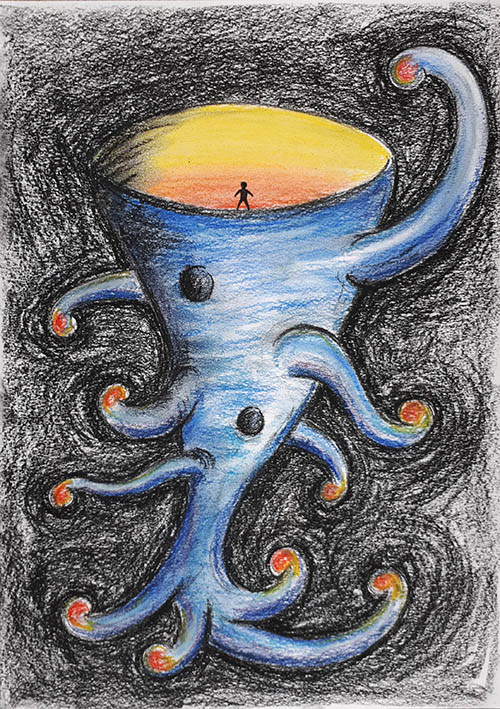
'Looking into the depths of your research journey'
Suddenly realising the immense multitude and complexities of your journey ahead can be quite daunting, as if standing on the edge of a precipice.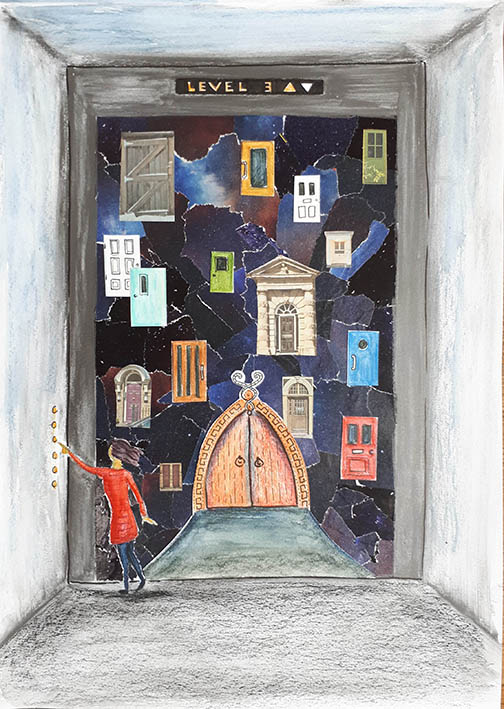
'Going Down', More doors and avenues of research to choose from.
Looking at any collection can be daunting, still feeling quite daunted and confused as to which way to go and what aspects to look at. I was still at a loss as to what collection I was going to concentrate on, then a silent voice in my head said 'The Adamson Collection', of course the one with the most items to look through!!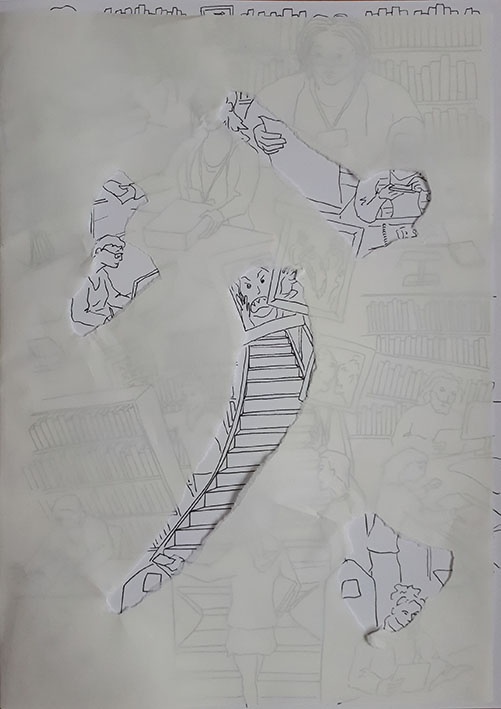
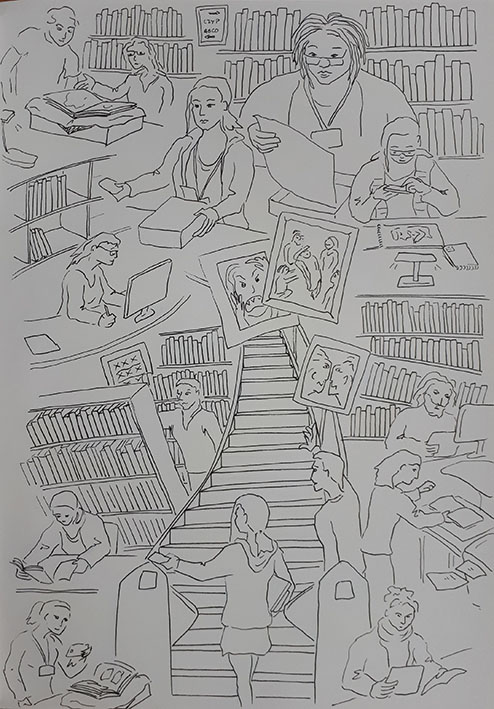
Discovering the Wellcome Trust Library
We then shown how to use the library and how to access the wealth of knowledge and information that is held within it. Having only had a glimpse before we were now introduced to the way that the library is catalogued and how to use the Rare Materials Room.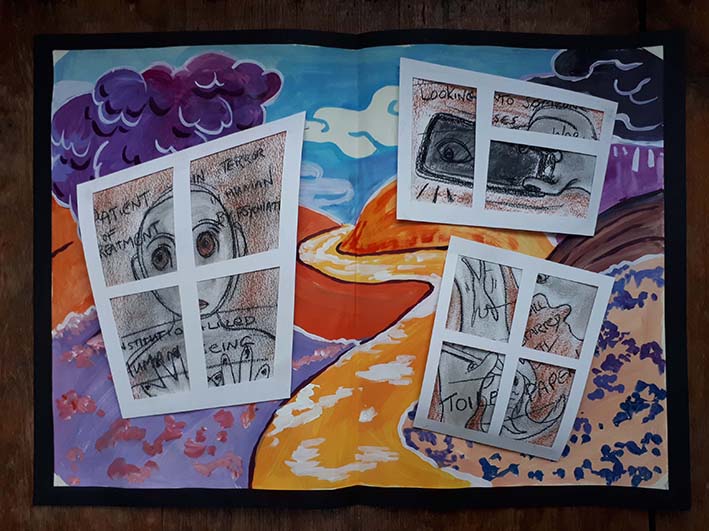
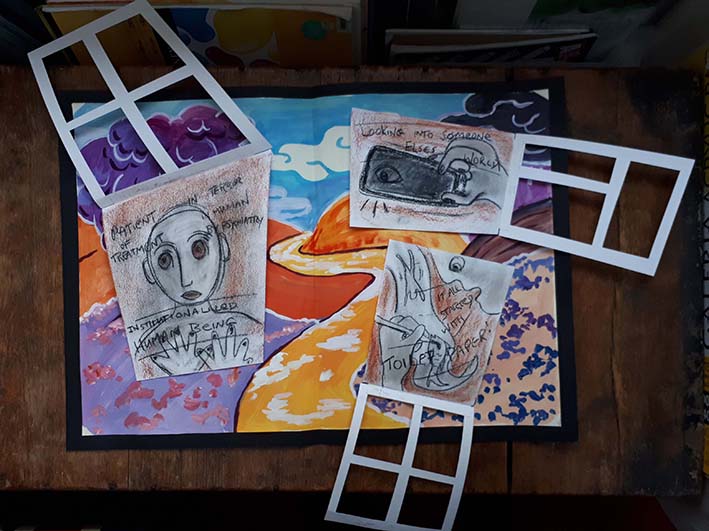
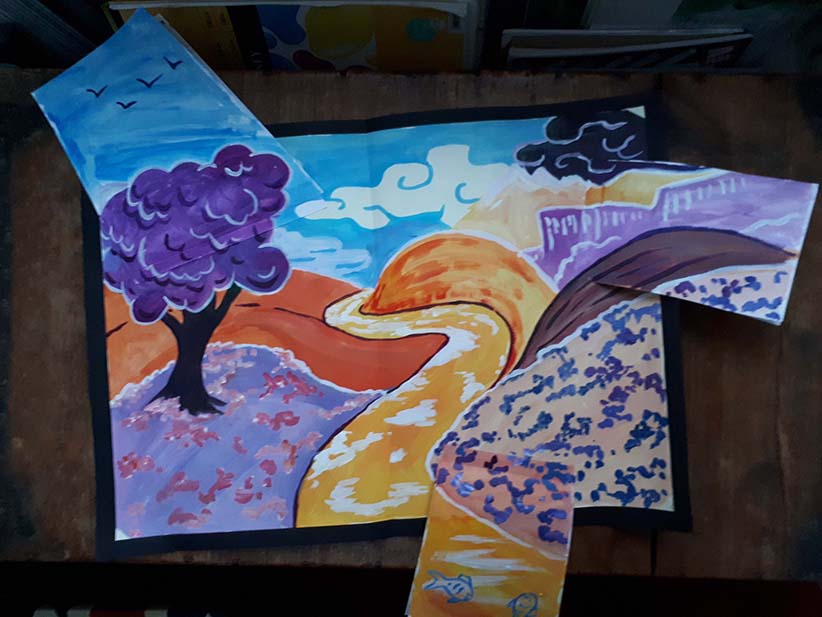
Looking into other's worlds
Looking into someone else s world can be a moving experience. You are looking through windows into the lives of people that you don't know and slowly uncovering more and more about their world and experiences.Having now selected the collection that I wanted to research; The Adamson Collection, I produced a timeline. The work I have been looking at is reflecting in my drawings of the research process, including the texture on the back of the timeline:
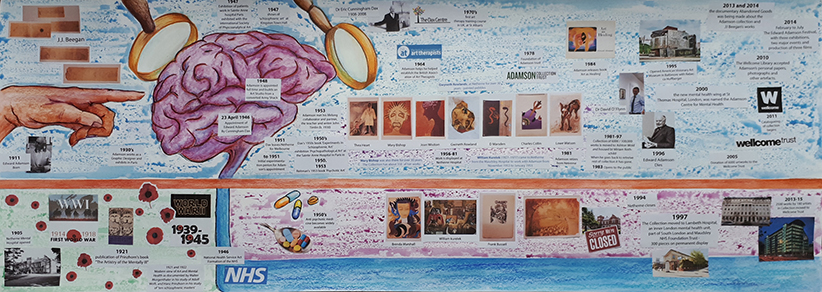
The Adamson Collection Timeline
Producing a timeline of the subject that I had chosen to study further is a really helpful thing to do, not only did it cement in my understanding the chronology of events, but helped cement the significant dates.
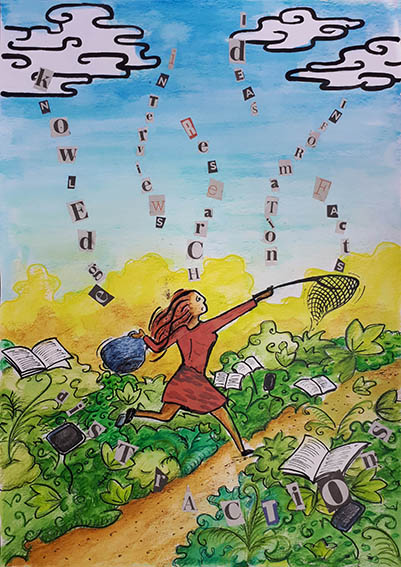
'Catching Clues'
Next you begin to gather the bits of information that are relevant to you subject you that you can put together to explain your findings.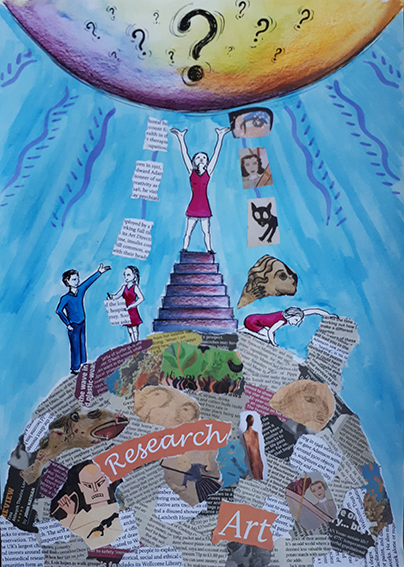
'Compiling your research'
Once you have collated all the information that relates to your subject matter, you can begin to compile it into something that you can present to an audience.
'Compiling your presentation'
Next you will work out how you are going to present what you have discovered so far to a wider audience.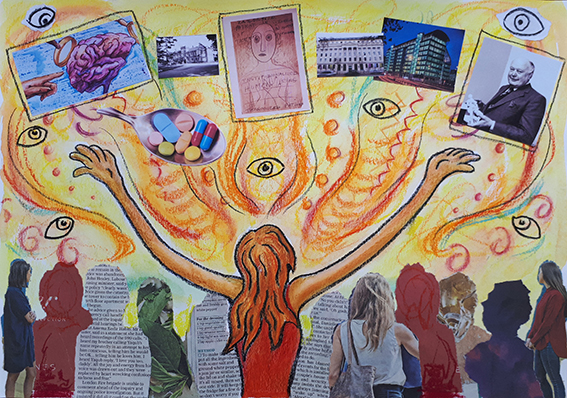
'Presenting your findings'
Then you get to decide how you show your research and label and present what you have learned and discovered to an audience in a way that they can understand it quickly and succinctly.
I think this process is true for almost any subject that you research, it has been a pleasure to do it at the Wellcome Trust and my
thanks go to all those from the Wellcome Trust and Outside In that have
facilitated this experience.
by Niki Gibbs
7th September 2018

